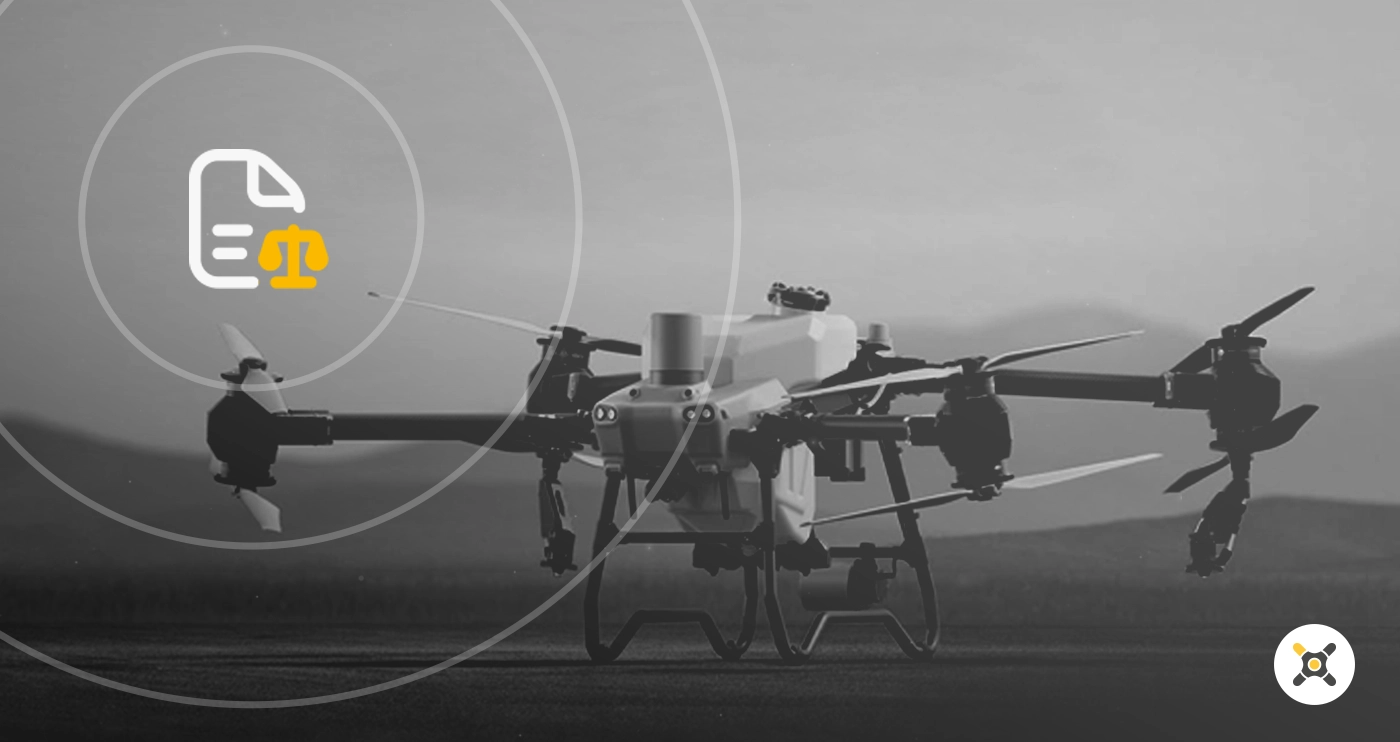Agricultural drones - you can fly legally thanks to these changes


We thought this day would never come, yet the Civil Aviation Authority has announced a decision that could make life significantly easier for agricultural drone operators. Poland was the first country in Europe to introduce an official derogation from EU regulations, allowing large spray drones (with an MTOM of less than 105 kg) to fly in the A3 open category - Without the need to obtain approval for each flight. In the rest of the article, we describe what exactly is being changed.
What this means in practice?
As an operator, you gain more freedom of action. Flying large drones in the open category becomes possible without complicated procedures and without having to apply for a permit each time. This is a significant improvement that can accelerate the deployment of drone technology in agriculture.
Who will benefit most from this change?
- Farmers using precision spraying with drones
- Companies providing agrodrone services
- Distributors and manufacturers of heavier drones

As of when the regulations come into effect?
According to the decision of the President of the Civil Aviation Authority (CAA), during the period may 7, 2025. until January 6, 2026. a derogation from the standard open category regulations has been introduced. This will make it possible to carry out large drone operations (<105 kg MTOM) for agricultural purposes, animal protection and professional demonstrations, without having to apply for a special category permit.
- Effective date: may 7, 2025.
- Duration: until January 6, 2026.
- Scope: drone operations with a maximum takeoff weight (MTOM) of up to 105 kg in the open category, subcategory A3.
New operational conditions for agricultural drones
Operations implemented under the derogation must meet conditions such as:
- VLOS: flights must be performed within the pilot's line of sight.
- Flight altitude: up to 30 m AGL.
- Distance from bystanders: minimum 30 m horizontal distance from bystanders and areas where bystanders are present, such as residential, commercial, industrial or recreational areas.
- Distance from uncontrolled areas: minimum 30 m from the area, not under the control of the BSP pilot, such as residential, commercial, industrial or recreational areas.
Requirements for agricultural drone pilot
In order to be able to perform operations based on the exemption as a pilot, you must:
- Be qualified at least NSTS-01, NSTS-02 or STS-01.
- Complete additional training ground and practical carried out by the member of staff responsible for the practical training tasks and the assessment of practical skills of the derogation.

Responsibilities related to agricultural drone flights
The drone operator is required to comply with the obligations set out in the UAS section.OPEN.050 of Commission Implementing Regulation (EU) 2019/947 of May 24, 2019. The operator's responsibilities include m.in.:
- developing the risks of the operation
- designation of the pilot in charge of the flight
- taking care of the drone's class identification mark
The drone pilot, on the other hand, must comply with the duties in the UAS section.OPEN.060 specified in the same regulation. The pilot's duties include belong mainly:
- possession of the appropriate authorization to perform the flight
- checking the technical condition of the device that allows you to perform a safe flight
- active observation of the environment in which the flight takes place
You can find a link to the regulation here.
We describe the difference between a pilot and a drone operator in our blog post: Drone operator - job, salary, course

Examples of agricultural drone applications according to a new exemption
We have the ability to perform operations with drones such as:
DJI Agras is a professional agricultural drone that enables large-scale precision spraying and spreading thanks to its payload capacity of up to 40 kg of liquid or 50 kg of bulk materials. Equipped with dual motors, obstacle avoidance system and field mapping capability, ensures the efficiency and safety of work in various field conditions.
DJI FlyCart is an advanced transport drone, capable of carrying cargo weighing up to 30 kg for up to 16 km with a full load. Equipped with RTK systems, obstacle detection, and the ability to operate in harsh weather conditions, it provides a modern solution for logistics and rescue operations.
You can learn more about the FlyCart drone in our blog post: The latest transport drone - DJI FlyCart 30
Summary
This is a long-awaited change in the drone market and we believe it is a a big step forward, that it has been successfully introduced. Farmers can launch new technology to significantly increase crop yields and equipment work can be carried out much more smoothly.
Detailed information on the requirements applicable to the SBSP operator under the application of derogation No. LBSP/SPEC/O/2025-02 is available at ULC. If you have any questions about drones, feel free to contact us we will be happy to provide all the answers.



